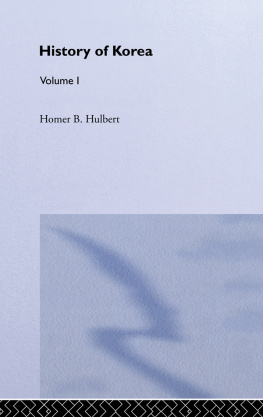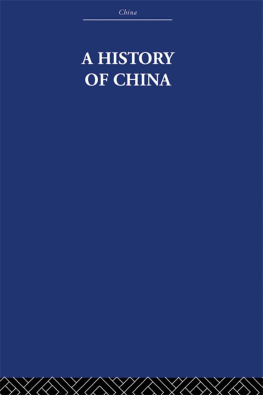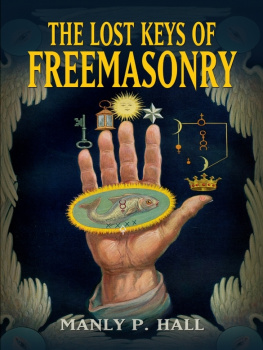The General Ahiman Rezon & Freemason's Guide
Daniel Sickels
Contents:
Freemasonry Its Origin And History
I. Name And Definition
Ii. Origin And Early History
Iii. Fundamental Principles And Spirit
Iv. Propagation And Evolution Of Masonry
V. Organization And Statistics
Vi. Inner Work Of Freemasonry
Vii. Outer Work Of Freemasonry
Viii. Action Of State And Church Authorities
The General Ahiman Rezon & Freemason's Guide
Ahiman Rezon - Signification Of The Term. By William S. Rockwell, Grand Master Of Georgia.
Preface.
Introductory.
Origin Of Masonry, And Its Advantages.
Government Of The Fraternity.
The Lodge And Its Government.
Qualifications Of Candidates.
The General Ahiman Rezon & Freemason's Guide , D. Sickels
Jazzybee Verlag Jrgen Beck
86450 Altenmnster, Loschberg 9
Germany
ISBN: 9783849630362
www.jazzybee-verlag.de
www.facebook.com/jazzybeeverlag
admin@jazzybee-verlag.de
Frontcover: Argus - Fotolia.com
Freemasonry Its Origin And History
By Hermann Gruber
I. NAME AND DEFINITION
Leaving aside various fanciful derivations we may trace the word mason to the French maon (Latin matio or machio), "a builder of walls" or "a stone-cutter" (cf. German Steinmetz, from metzen, "to cut"; and Dutch vrijmetselaar).
The compound term Freemason occurs first in 1375 according to a recently found writing, even prior to 1155 [1] and, contrary to Gould [2] means primarily a mason of superior skill, though later it also designated one who enjoyed the freedom, or the privilege, of a trade guild. [3] In the former sense it is commonly derived from freestone-mason, a mason hewing or building in free (ornamental) stone in opposition to a rough (stone) mason. [4] This derivation, though harmonizing with the meaning of the term, seemed unsatisfactory to some scholars. Hence Speth proposed to interpret the word freemasons as referring to those masons claiming exemption from the control of local guilds of the towns, where they temporarily settled. [5] In accordance with this suggestion the "New English Dictionary of the Philological Society" (Oxford, 1898) favours the interpretation of freemasons as skilled artisans, emancipated according to the medieval practice from the restrictions and control of local guilds in order that they might be able to travel and render services, wherever any great building (cathedral, etc.) was in process of construction. These freemasons formed a universal craft for themselves, with a system of secret signs and passwords by which a craftsman, who had been admitted on giving evidence of competent skill, could be recognized. On the decline of Gothic architecture this craft coalesced with the mason guilds. [6]
Quite recently W. Begemann [7] combats the opinion of Speth [8] as purely hypothetical, stating that the name freemason originally designated particularly skilled freestone-masons, needed at the time of the most magnificent evolution of Gothic architecture, and nothing else. In English law the word freemason is first mentioned in 1495, while frank-mason occurs already in an Act of 1444-1445. [9] Later, freemason and mason were used as convertible terms. The modern signification of Freemasonry in which, since about 1750, the word has been universally and exclusively understood, dates only from the constitution of the Grand Lodge of England, 1717. In this acceptation Freemasonry, according to the official English, Scottish, American, etc., craft rituals, is most generally defined: "A peculiar [some say "particular" or "beautiful"] system of morality veiled in allegory and illustrated by symbols." Mackey [10] declares the best definition of Freemasonry to be: "A science which is engaged in the search after the divine truth." The German encyclopedia of Freemasonry, "Handbuch" [11] defines Freemasonry as "the activity of closely united men who, employing symbolical forms borrowed principally from the mason's trade and from architecture, work for the welfare of mankind, striving morally to ennoble themselves and others and thereby to bring about a universal league of mankind [Menschheitsbund], which they aspire to exhibit even now on a small scale". The three editions which this "Handbuch" (Universal Manual of Freemasonry) has had since 1822 are most valuable, the work having been declared by English-speaking Masonic critics by far the best Masonic Encyclopedia ever published. [12]
II. ORIGIN AND EARLY HISTORY
Before entering upon this and the following divisions of our subject it is necessary to premise that the very nature of Freemasonry as a secret society makes it difficult to be sure even of its reputed documents and authorities, and therefore we have consulted only those which are acknowledged and recommended by responsible members of the craft, as stated in the bibliography appended to this article. "It is the opprobrium of Freemasonry", says Mackey [13]
that its history has never yet been written in a spirit of critical truth; that credulity... has been the foundation on which all masonic historical investigations have been built,... that the missing links of a chain of evidence have been frequently supplied by gratuitous invention and that statements of vast importance have been carelessly sustained by the testimony of documents whose authenticity has not been proved.
"The historical portion of old records", he adds [14]
as written by Anderson, Preston, Smith, Calcott and other writers of that generation, was little more than a collection of fables, so absurd as to excite the smile of every reader.
The germs of nearly all these fantastic theories are contained in Anderson's "The Constitutions of Free Masons" (1723, 1738) which makes Freemasonry coextensive with geometry and the arts based on it; insinuates that God, the Great Architect, founded Freemasonry, and that it had for patrons, Adam, the Patriarchs, the kings and philosophers of old. Even Jesus Christ is included in the list as Grand Master of the Christian Church. Masonry is credited with the building of Noah's Ark, the Tower of Babel, the Pyramids, and Solomon's Temple. Subsequent authors find the origin of Masonry in the Egyptian, Dionysiac, Eleusinian, Mithraic, and Druidic mysteries; in sects and schools such as the Pythagoreans, Essenes, Culdees, Zoroastrians, and Gnostics; in the Evangelical societies that preceded the Reformation; in the orders of knighthood (Johannites, Templars); among the alchemists, Rosicrucians, and Cabbalists; in Chinese and Arabic secret societies. It is claimed also that Pythagoras founded the Druidic institution and hence that Masonry probably existed in England 500 years before the Christian Era. Some authors, considering geological finds as Masonic emblems, trace Masonry to the Miocene (?) Period [15] while others pretend that Masonic science "existed before the creation of this globe, diffused amidst the numerous systems with which the grand empyreum of universal space is furnished". [16]
It is not then difficult to understand that the attempt to prove the antiquity of Freemasonry with evidence supplied by such monuments of the past as the Pyramids and the Obelisk (removed to New York in 1879) should have resulted in an extensive literature concerning these objects. [17] Though many intelligent Masons regard these claims as baseless, the majority of the craft [18] still accept the statement contained in the "Charge" after initiation: "Ancient no doubt it is, having subsisted from time immemorial. In every age monarchs [American rituals: "the greatest and best men of all ages"] have been promoters of the art, have not thought it derogatory to their dignity to exchange the sceptre for the trowel, have participated in our mysteries and joined in our assemblies". [19] It is true that in earlier times gentlemen who were neither operative masons nor architects, the so-called geomatic Masons [20] joined with the operative, or dogmatic, Masons in their lodges, observed ceremonies of admission, and had their signs of recognition. But this Masonry is by no means the "speculative" Masonry of modern times, i.e., a systematic method of teaching morality by means of such principles of symbols according to the principles of modern Freemasonry after 1723. As the best German authorities admit [21] speculative Masonry began with the foundation of the Grand Lodge of England, 24 June, 1717, and its essential organization was completed in 1722 by the adoption of the new "Book of Constitutions" and of the three degrees: apprentice, fellow, master. All the ablest and most conscientious investigations by competent Masonic historians show, that in 1717 the old lodges had almost ceased to exist. The new lodges began as convivial societies, and their characteristic Masonic spirit developed but slowly. This spirit, finally, as exhibited in the new constitutions was in contradiction to that which animated the earlier Masons. These facts prove that modern Masonry is not, as Gould [22] Hughan [23] and Mackey [24] contend, a revival of the older system, but rather that it is a new order of no greater antiquity than the first quarter of the eighteenth century.





